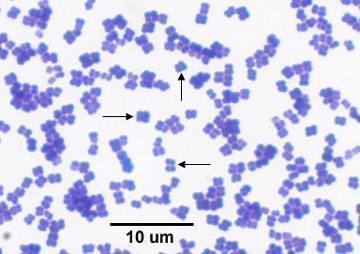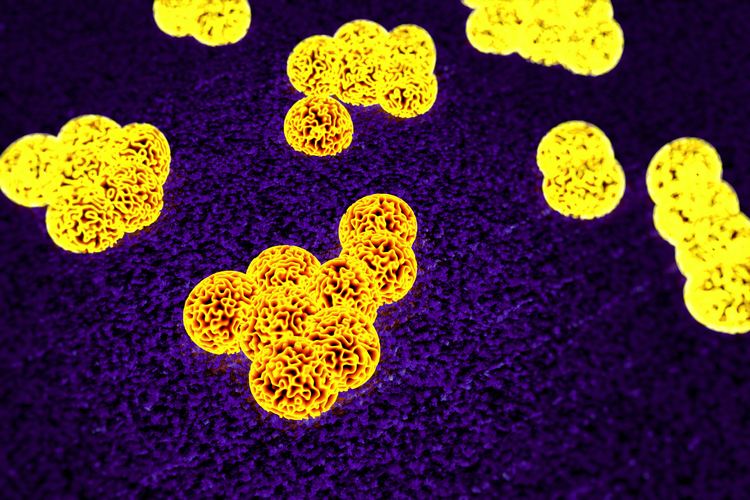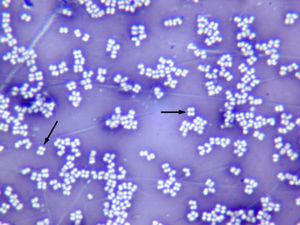Higher classification Micrococcus | Order Micrococcales Genus Micrococcus Rank Species Phylum Actinobacteria | |
Similar Micrococcus, Bacteria, Hay bacillus, Bacillus megaterium, Serratia marcescens | ||
Culture a bacteria on agar micrococcus luteus
Micrococcus luteus is a Gram-positive, to Gram-variable, nonmotile, Coccus, saprotrophic bacterium that belongs to the family Micrococcaceae. It is urease and catalase positive. An obligate aerobe, M. luteus is found in soil, dust, water and air, and as part of the normal flora of the mammalian skin. The bacterium also colonizes the human mouth, mucosae, oropharynx and upper respiratory tract. It was discovered by Sir Alexander Fleming before he discovered Penicillin in 1928.
Contents
- Culture a bacteria on agar micrococcus luteus
- Medical vocabulary what does micrococcus luteus mean
- Novel codon usage
- Classification
- Ultraviolet absorption
- References

M. luteus is considered a contaminant in sick patients and is resistant by slowing of major metabolic processes and induction of unique genes. It is a high G + C ratio bacterium.

M. luteus is coagulase negative, bacitracin susceptible, and forms bright yellow colonies on nutrient agar. To confirm it is not Staphylococcus aureus, a bacitracin susceptibility test can be performed.

M. luteus has been shown to survive in oligotrophic environments for extended periods of time. Recent work by Greenblatt et al. demonstrate that Micrococcus luteus has survived for at least 34,000 to 170,000 years on the basis of 16S rRNA analysis, and possibly much longer. It was sequenced in 2010 and has one of the smallest genomes of free-living actinobacteria sequenced to date, comprising a single circular chromosome of 2,501,097 bp.

Medical vocabulary what does micrococcus luteus mean
Novel codon usage
M. luteus was one of the early examples of novel codon usage, which led to the conclusion that the genetic code is not static, but evolves.
Classification
Micrococcus luteus was formerly known as Micrococcus lysodeikticus.
In 2003, it was proposed that one strain of Micrococcus luteus, ATCC 9341, be reclassified as Kocuria rhizophila.
Ultraviolet absorption
Norwegian researchers in 2013 found a M. luteus strain that synthesizes a pigment that absorbs wavelengths of light from 350 to 475 nano-meters. Exposure to these wavelengths of ultraviolet light, commonly referred to as UVA, has been correlated with an increased incidence of skin cancer, and scientists believe this pigment can be used to make a sunscreen that can protect against UVA.
